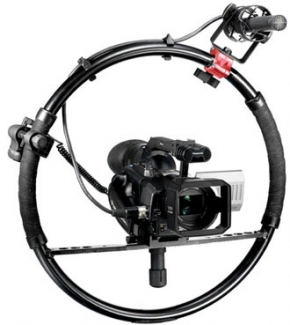Z1 W/A- This tends to be the best camera to work with when shooting projects and for the steady cam.

Some useful things to remember....
-Mostly always use a PAL (25 f/p/s)
-When setting up the camera, work front to back
-Framing and composition: Consider the rule of thirds, correct headroom, looking room etc
-Focus: Make sure everything in shot is visible and clear, (zoom fully into the eye of the subject and manually focus from there- then zoom out)
-Focal Length: Zooming in to set the shot, try not to zoom too much in the piece, can look amateur
-Filters: (WB) White Balance- Hold camera to something white, (white wall/ piece of paper etc), and press the button! Do this before adjusting aperture and shutter speed, and consider that filming inside and out is different and the WB will need adjusting
-Neutral Density (ND): This would be for a brightly lit day and will filter the camera as if it's wearing sunglasses... ND1: "tinted"
ND2: "Dark Glasses"
REMEMBER BEFORE FILMING...
Batteries charged?
Tapes labelled?
Bars and timing done beforehand...
Before filming any of your actual footage, 30 seconds of "Bars" should be shot. This is because Final Cut seems to like a "run up" to the footage, (PRE-ROLL). The bars will record sounds but not picture.
The camera has a Timecode which needs to be continuous throughout filming otherwise it will re-set itslef and the framing will be lost. This is where I've gone wrong a few times. Rewind to the end of the previous scene and the timecode will continue running from then.
Always leave a little space at the end of your tape for POST-ROLL, this will give Final Cut time to catch up with the data.
(If you feel the tapes running out, CHANNNGE IT)!
A DV PAL usually films about 65 minutes out of an hour long tape.
-F Stop (Exposure): This will be the Aperture, (amount of light) VS the Shutter Speed.
All exposure on the camera can be found on the "IRIS" silver button on the side.
-Shutter Speed: Default the setting to 50 for video cameras, (different for stills).
-Gain: When you're filming you'd want it at 0
-Zebra: Exposure consideration... Looking out for drastically different ligtht in your scene, for example a fairly dark room with a really bright room; this will affect the pixals in the camera.
Equpiment to accompany the Camera...

TRIPOD-This tends to go hand in hand with the Z1 when producing a film. It creates a steady platform for the shot and avoids "wonkiness" and the "hand held" effect.
 Another useful piece of equipment would be the MONOPOD. This, like the Tripod, is used as a base and support for the camera, but can be used for shots that the Tripod can't achieve. Shooting L/A for example, or from above. I'd really like to work with this as I think it would be good for 'tracking shoes' shots.
Another useful piece of equipment would be the MONOPOD. This, like the Tripod, is used as a base and support for the camera, but can be used for shots that the Tripod can't achieve. Shooting L/A for example, or from above. I'd really like to work with this as I think it would be good for 'tracking shoes' shots.
DOLLY. This is used mostly for panning the camera around a shot and is useful as it's a lot smoother than perhaps holding the camera maually and trying to create the same effect. I would like to use this piece of equipment for my solo project as I'm planning to do a scene where the camera pans my car alongside it as I drive away.

FIG RIGS are something I'd never seen before this course. The steering wheel of any good shot- literally! You screw the camera in the middle of the device and hold it around the wheel. This gives stability and would be easier to move the camera around more smoothly and is also a lot better for balance.
Other pieces of equipment...

The Panasonic- Good for Archive footage/ hand held material.
 The Rifle Mic- One of the more popular Microphones used for the audio your're trying to capture. Also used on a.....
The Rifle Mic- One of the more popular Microphones used for the audio your're trying to capture. Also used on a.....  BOOM stand---->
BOOM stand---->And finally when working with audio..... are a must!

No comments:
Post a Comment